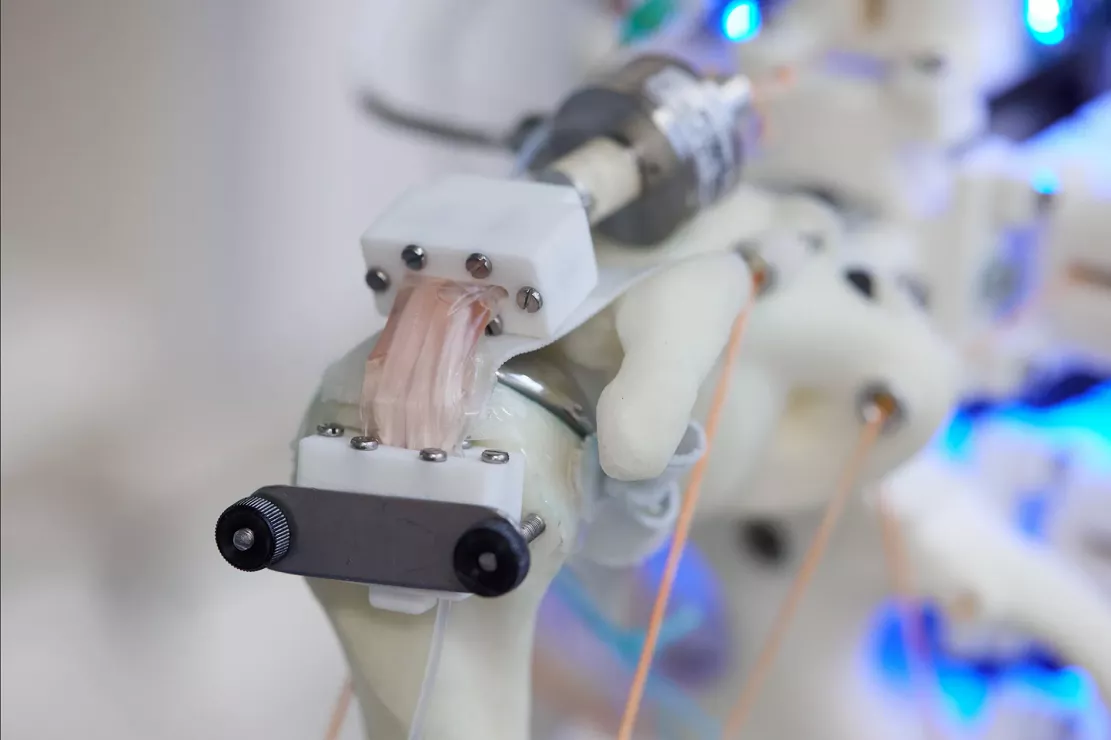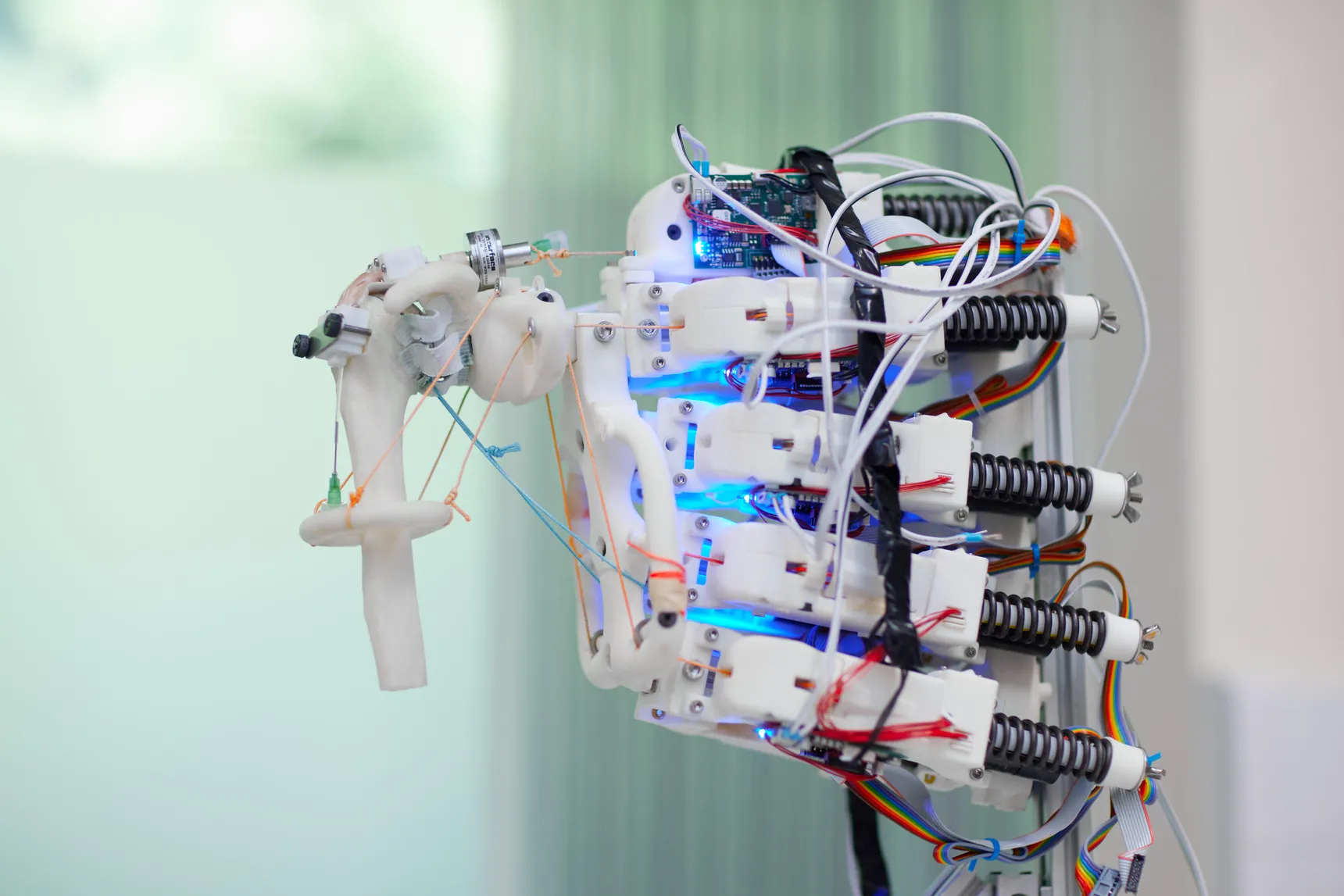Tissue engineering science - or the cultivation of human cells for Medicine - is largely in its infancy, and today only the simplest laboratory cultured cells can be used for experimental treatment But researchers say a new method of tissue engineering has the potential to improve the quality of the work: growing cells on a mobile robot skeleton

Usually, the cells used in this regenerative medicine grow in a static environment. Think about it: Petri dishes and miniature 3D scaffolds. Past experiments have shown that cells can grow on moving structures such as hinges, but these experiments stretch or bend the tissue only in a single direction. But now, researchers from Oxford University and robot company devanthro believe that if you want to cultivate substances that move and bend like tendons or muscles, it is best to reproduce their natural growth environment as accurately as possible. So they decided to approximate a moving human body.
Of course, growing cells in a real person will produce various difficulties, so the interdisciplinary team decided to use a robot to get as close to the human musculoskeletal system as possible. It is understood that they adapted the open source robot skeleton designed by devanthro engineers and created a customized growth environment for cells, which can be installed on the skeleton and bent as needed. It is reported that this growth environment is called bioreactor.
The researchers upgraded the robot's shoulder joint so that it can more accurately approach human motion. Then they created a bioreactor that could be installed on the robot's shoulder. It consists of two biodegradable silk wires and extends between the two anchors, just like a bunch of hair. The whole structure is wrapped in an outer membrane similar to a balloon.

Human cells were then seeded on these hairy filaments and a nutrient rich liquid designed to promote growth was injected into the chamber. The cells grow over a period of two weeks, during which they enjoy daily routine exercise. For 30 minutes a day, the bioreactor was stuffed into the shoulder and swayed.
But the biggest problem is that although the team observed changes in motor cells that were different from those that grew in a static environment, they were not actually sure whether these changes had any benefits.
Pierre Alexis mouthuy of the botnar Institute of musculoskeletal Sciences at Oxford University, the project's lead researcher, told the verge that the differences he and his colleagues observed in cells grown in this way - which are based on measuring the activity and growth of certain genes - are vague at best for future medical applications.
Therefore, the team said that it is certainly possible to grow cells in the robot skeleton. Now, they just need to find out if it's worth the time. In the relevant papers published, researchers have some optimistic speculation about the potential of this industry. Their reason is that in the future, detailed scans of patients can be used to create perfect copies of their body's joints and allow tissues such as tendons to grow in human simulated surgery.
But now it's back on the drawing board -- or the skeleton of the robot. As mouthuy said -- "we need to do more to understand what really happened."